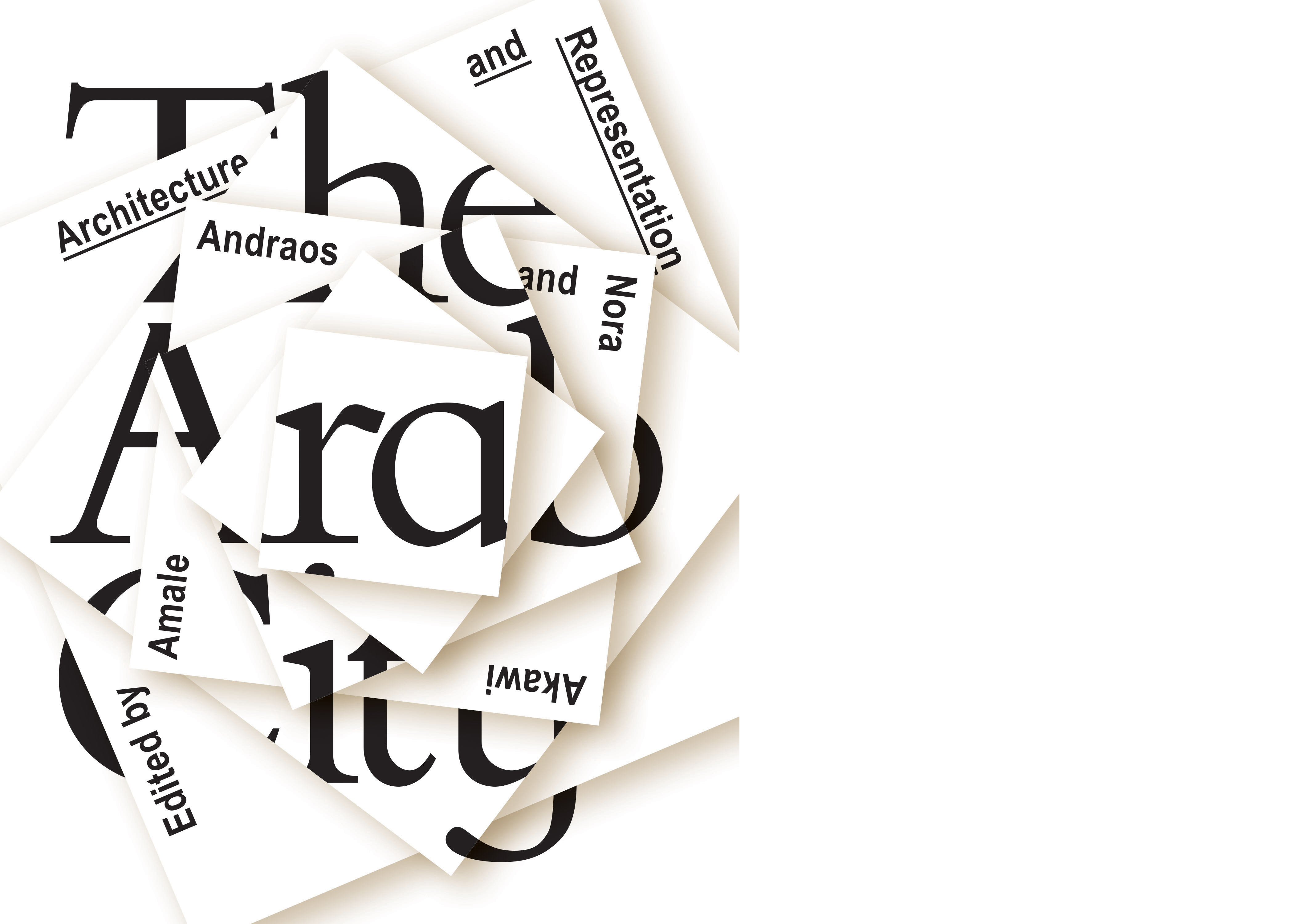by: ac
The Arab City: Architecture and Representation, edited by Amale Andraos and Nora Akawi, is comprised of 26 essays discussing not just the state of Arab architecture but the state of architecture in an endlessly fluid political landscape. The essays and commentaries were gathered for the 2014 symposium at Columbia University’s Graduate School of Architecture Planning and Preservation (GSAPP) entitled “Architecture and Representation: The Arab City.” The result is an endlessly handsome volume of poetic dialogue about the region.
The series of essays, broken up into three sections, is often not an easy read. If one is not completely comfortable with the geography and history of the Arab world, a map and Wikipedia must be at hand to fill in historical gaps and understand the delicate adjacencies of each country.
Of particular delight was Lila Abu-Lughod’s brief memoir of her mother, Janet Abu-Lughod, urbanist and author of the pinnacle Cairo: 1001 Years of the City Victorious. The young Abu-Lughod’s essay centers on her mother’s explorations of Arab cities and the experience of cataloguing her mother’s personal library, now at Columbia’s Global Center in Amman. To the daughter, the library, as well as her mother’s works and memories, are a deep repository of ideas on the Arab city that seem as hopeful as any epic architecture project.
Ziad Jamaleddine grapples with issues of architecture and representation in the Arab city in a historical context, from the embrace of modernism by the optimistic, newly-liberated nation-states of the Middle East in the 1950s to the reductive use of regional architectural clichés and references to recent traumas in contemporary architecture. The author uses the work of Jean Nouvel – the screen as “Orientalized signifier” at L’Institut du monde arabe in Paris and the scarred façade of his Beirut residential tower – to flesh out these issues of representation and offers a more dynamic approach with the work of his firm, L.E.F.T. In a similar vein, Adrian Lahoud’s essay, “Fallen Cities: Architecture and Reconstruction,” discusses architecture’s role in politics and nation-building, using Oscar Niemeyer’s Rachid Karame Fair and Exposition in Lebanon as an example. While Lahoud ultimately predicts a homogenous corporate architecture for the Arab world, the aspirational exposition project serves as a prototype for giving the social apparatus a durable form.
Meanwhile, Andraos and Caitlin Blanchfield’s interview with Ali Mangera of Mangera Yvars Architect is particularly insightful and provocative. The nuanced description of his “high capacity prayer space” at the Qatar Faculty of Islamic Studies serves as a launching pad to multiple issues, including questions of identity and contemporary Islamic architecture and labor issues in the Middle East. Mangera describes the delicate dance between the literal and conceptual in the prayer space. He candidly speaks about labor issues in the region while asking us to think about why Qatar in particular is singled out. Images of his building beg the question of why Nouvel gets hired in the Middle East at all when such local talent is capable of such glorious accomplishments.
The reader is struck throughout the text with how the dominant discourse in the book predominantly references BIG architecture. This is in contrast to, say, the discourse coming out of Latin American, where investigations into housing and low-income community building are paramount. Instead, the goal of the text is to assess the meaning of architecture in the Arab city. To me, however, the book’s greatest accomplishment is forcing the reader to re-read, question, research, check the map, and review the dates surrounding this fascinating fluid architectural landscape. A place is better understood through interacting with The Arab City.








